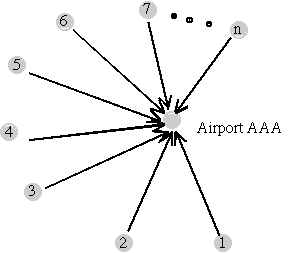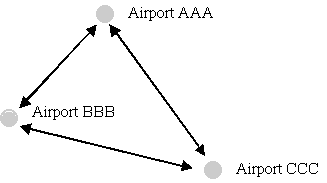
The context for this case is described in Prof. Odoni's paper on Flow Management Problems in Air Traffic Control (ATC), referred to as the FMP paper in the rest of the case.
1. Develop a network description of the ATC system that addresses the issues raised in the FMP paper.
- Define the nodes and links (undirect) and/or arcs (directed) appropriately.
- Classify nodes, as sources, sinks, etc. For sources, describe the supply; for sinks, describe the demand. That is, what are supply and demand in the context of the FMP paper and what generates them? Are they deterministic or stochastic? How would you estimate the values?
- Describe the flow on links/arcs, that is, what is the flow and what generates it. What are the lower bounds and upper bounds of flow and what determines them? Are they deterministic or stochastic? How would you estimate the values?
- What are appropriate costs/distances for the links/arcs? Are they deterministic or stochastic? How would you estimate the values?
2. Assume that the network that addresses some of the issues raised in the FMP paper is:

There is one airport (AAA) that acts as a sink and n flights that act as sources. One arc is directed from each of the flight nodes to airport AAA. Note that departures from Airport AAA are not modeled.
Assume the following.
Suppose the objective of the FAA is to minimize total delay. Formulate a mathematical program to help the FAA. State clearly any additional assumptions you have made.
3.Suppose that the network that addresses some of the issues raised in the FMP paper consists of nodes representing each airport and bidirectional links connecting each node to every other node.

Assume three airports for simplicity. We also assume the following.
Suppose the objective of the FAA is to minimize total delay. Formulate a mathematical program to help the FAA. State clearly any additional assumptions you have made.